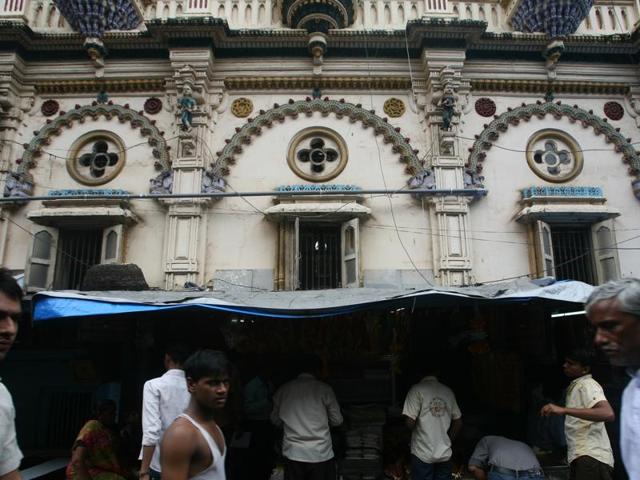Insider’s guide to... Bhuleshwar
Thanks to the dozens of temples, and countless shops, the area is the very definition of chaos
Thanks to the dozens of temples, the devotees that flock to them, and countless shops, the area is the very definition of chaos

Bhuleshwar resembles a cluster of nerves: narrow lanes that run over each other, and roads wide enough only to support pedestrian traffic. So much so that our photographer had a tough task standing still long enough to shoot images. The streets are abundant with what can only be described as a zillion shops that sell everything from saris and silverware to endless varieties of papads and masalas. Most interestingly, they are built in all possible sizes. For instance, the lane opposite Samudri Mata Temple is home to shops that are just about 4-ft tall. Think Lilliputs.
If you’re planning to visit, walk. Driving here would be as good an idea as taking a Land Rover to Dadar during Ganpati Visarjan. We get an expert — Bharat Gothoskar, founder of Khaki Tours, a city-based organisation that conducts heritage walks — to give a tour.
DID YOU KNOW?
1) How it gets its name: Bhuleshwar is a temple district of sorts, with over 100 temples. It gets its name from a namesake 150-year-old Shiva temple. Legend has it that the Shiva linga inside the temple manifested itself instantaneously and is a meteorite rock. So, it is known as Shiva’s realm, and features 84 crore gods and goddesses from Hindu mythology. The entrance to the temple is marked by an exquisitely carved Nagarkhana (rock-cut palace gateway).

Read more: Insider’s guide to... Crawford Market
2) Home to the finest imitation jewellery in Mumbai: On Chandi Galli — a crowded street that starts at Mota Mandir ( a temple for baby Krishna) — shops sell a variety of beads, from high-end pearl-like beads to cheaper plastic ornament beads for interior decor. The shops also have a variety of miniatures of Hindu deities.

Read more: Insider’s guide to… Kalbadevi
3) The biggest animal shelter in the city: Mumbai Panjrapole was built in 1834 when a Parsi riot (the Bombay Dog Riot) led by businessmen Sir Jamsetjee Jeejeebhoy took place against the British government’s massacre of stray dogs. Panjrapole was built with the intention of housing stray dogs, to provide for their healthcare and food. Today, however, Panjrapole houses over 2,000 cows, and the milk produced is supplied to surrounding temples.

4) The only Sun temple in Mumbai: It was built by Seth Maniar, a Saurashtra resident, in 1899. The temple opens at sunrise and shuts at sundown, and features seven horses on the roof of the inner altar to represent the days of the week.






